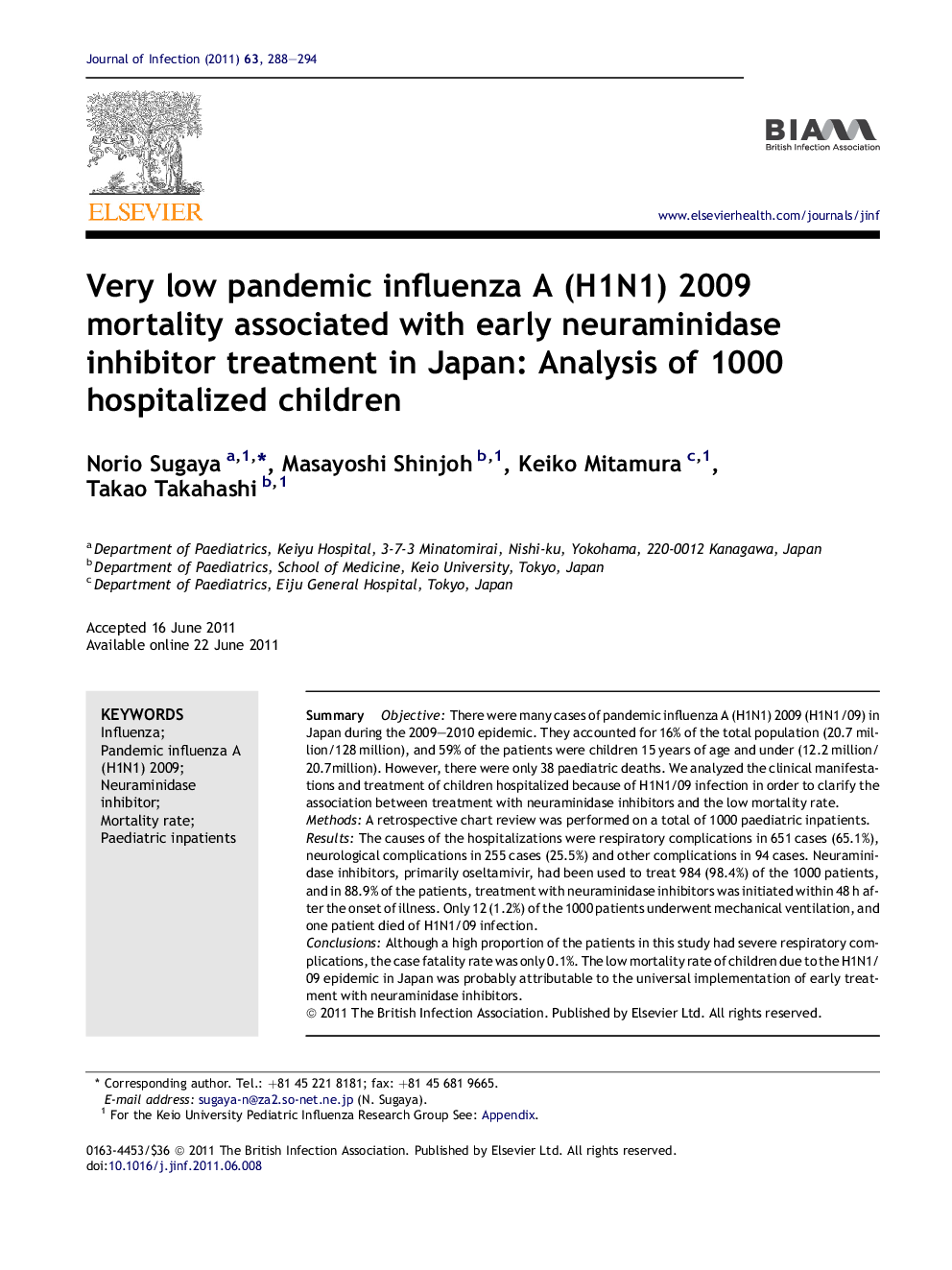| Article ID | Journal | Published Year | Pages | File Type |
|---|---|---|---|---|
| 3374906 | Journal of Infection | 2011 | 7 Pages |
SummaryObjectiveThere were many cases of pandemic influenza A (H1N1) 2009 (H1N1/09) in Japan during the 2009–2010 epidemic. They accounted for 16% of the total population (20.7 million/128 million), and 59% of the patients were children 15 years of age and under (12.2 million/20.7million). However, there were only 38 paediatric deaths. We analyzed the clinical manifestations and treatment of children hospitalized because of H1N1/09 infection in order to clarify the association between treatment with neuraminidase inhibitors and the low mortality rate.MethodsA retrospective chart review was performed on a total of 1000 paediatric inpatients.ResultsThe causes of the hospitalizations were respiratory complications in 651 cases (65.1%), neurological complications in 255 cases (25.5%) and other complications in 94 cases. Neuraminidase inhibitors, primarily oseltamivir, had been used to treat 984 (98.4%) of the 1000 patients, and in 88.9% of the patients, treatment with neuraminidase inhibitors was initiated within 48 h after the onset of illness. Only 12 (1.2%) of the 1000 patients underwent mechanical ventilation, and one patient died of H1N1/09 infection.ConclusionsAlthough a high proportion of the patients in this study had severe respiratory complications, the case fatality rate was only 0.1%. The low mortality rate of children due to the H1N1/09 epidemic in Japan was probably attributable to the universal implementation of early treatment with neuraminidase inhibitors.
